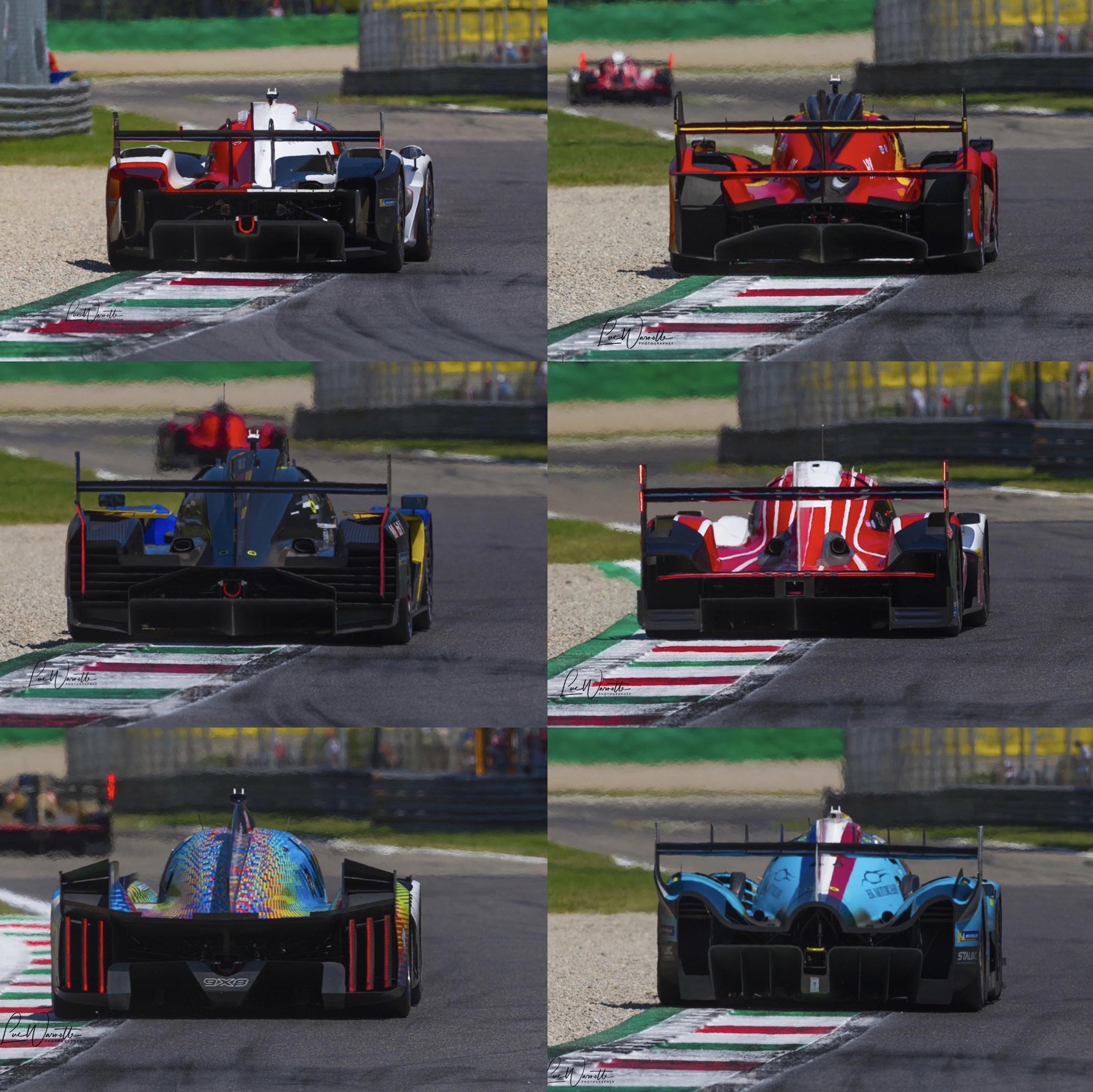LMH and LMDh in short
IMSA and ACO convergence
September 18, 2020, ACO, IMSA and FIA WEC confirmed the details of the new LMDh car that would compete for overall wins at Daytona, Le Mans, Sebring and major endurance races over the world in the top level of endurance sports car racing. Starting 2023, LMH and LMDh compete in Hypercar category.
📷 © Luc Warnotte at Monza. Top: LMH Toyota GR010-Hybrid and Ferrari 499P; middle: LMDh Cadillac V-Series.R and Porsche 963; bottom: LMH Peugeot 9X8 and Glickenhaus SG007 LMH/S, the only non-hybrid LMH
Differences between LMH and LMDh
LMH allows a manufacturer to design and develop its own car including all elements of the hybrid system, which, if present, must be on the front axle.
The hybrid system is not compulsory in LMH, and limited to 200 kW on the front axle, but imposed in LMDh, with a power of 50 kW and placed on the rear axle. Therefore, Toyota, Ferrari and Peugeot opted for a 4 by 4 transmission whereas other manufacturers use rear transmission. Glickenhaus 007 has NO hybrid system, still it is a LMH based car.
LMDh requires manufacturers and teams to use a high percentage of off-the-shelf components:
- The monocoque and the suspension, must be one of the four licensed constructors, ORECA, Dallara, Ligier and Multimatic.
- The rear-axle hybrid system is a combination of
o Bosch motor generator unit (MGU),
o Williams Advanced Engineering battery and
o Xtrac gearbox.
📷 © Luc Warnotte at Portimao. Porsche 963 is a LMDh based Hypercar.
The manufacturer only develops the aerodynamics, supplies the internal combustion element of the powertrain and has the freedom to do what it wants with the electronics.
The 7-speed Xtrac P1359 gearbox is common to both classes.
Maximum cumulative power (500kW), minimum weight (1030 kg) and Michelin tires are identical to the two classes of prototypes.
📷 © Luc Warnotte at Spa-Francorchamps. Ferrari 499P is a LMH based Hypercar.
Balance of Performance
If certain points of regulation are common, LMH allows more freedom to the manufacturers than LMDh (see above).
The Balance of Performance (BoP) aims to ensure the balance between the manufacturers and between the LMHs and LMDhs so as not to penalize any technology and to promote a tightening of performance in the same window.
📷 © Luc Warnotte at Spa-Francorchamps. LMH based Hypercar Toyota GR010-Hybrid #8 ready to lap the LMDh based Hypercar Porsche 963 #6.
Related news
📷 © Luc Warnotte at The Glen. Top 5 IMSA WeatherTech SportsCar Championship for GTP.
📷 © Luc Warnotte at Monza. Toyota strikes fourth victory.







